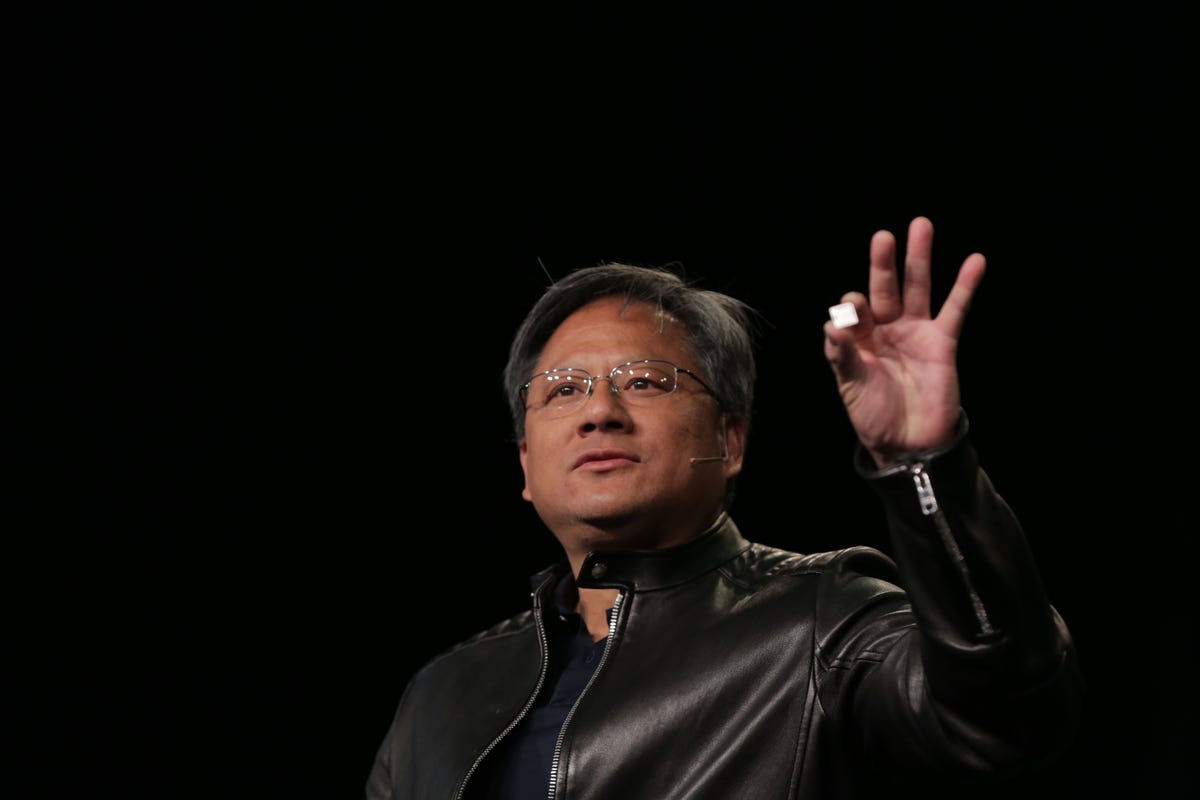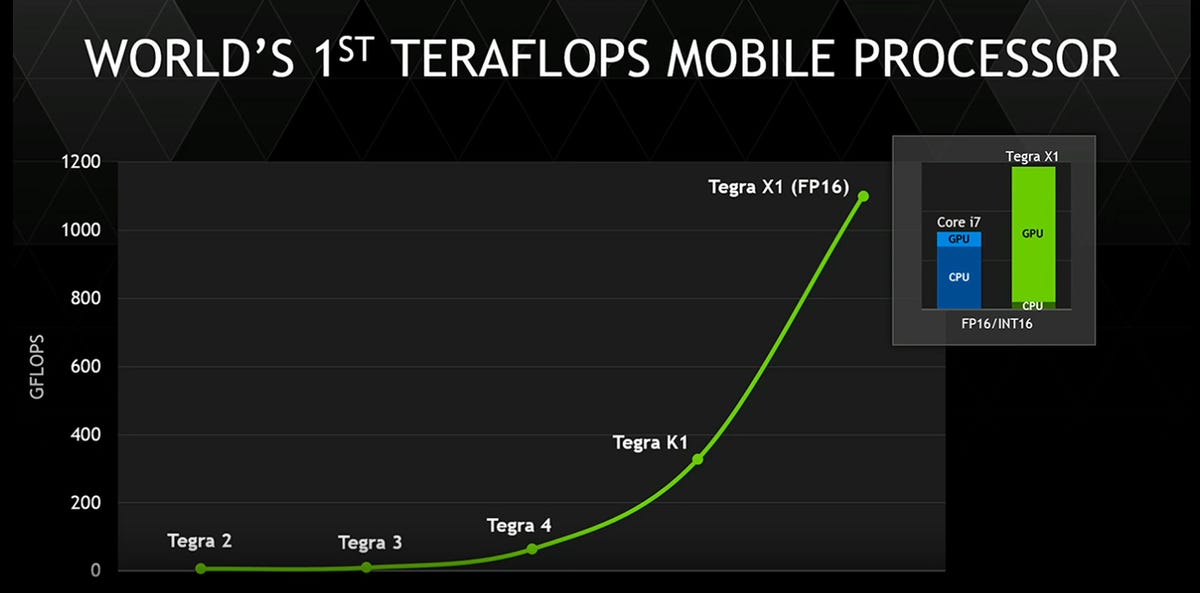
Nvidia
LAS VEGAS — Nvidia wants to bring its high-end PC graphics card business to mobile — and it thinks it has a chip that can deliver the image quality of an Xbox One to the dashboard of your car.
At the Consumer Electronics Show on Sunday, Nvidia announced the Tegra X1 processor, which CEO Jen-Hsun Huang described as a tiny workhorse for smartphones and cars. The Santa Clara, Calif., company aims to push into the automotive market with chips for vehicles’ driver-assistance and entertainment systems as they become as complex in their way as PCs and tablets.
Huang also unveiled two new technologies for cars using the Tegra X1. Automakers could use Nvidia’s Drive PX platform to push advanced driver-assistance systems a step closer to self-driving cars. The PX system can scan dozens of images a second using cameras and sensors around a vehicle and actually learn to categorize these images so it can more easily recognize them, Huang said. The technology would help a car assist drivers to avoid crashes or, eventually, take over all driving responsibilities.
Huang also unveiled Drive CX, a system that uses the Tegra chip to provide souped-up graphics and infotainment displays inside vehicles. He said cars will soon have many more touchscreen displays and Nvidia wants to provide the technology to make those displays graphically stunning and powerful enough to create real-time navigation maps in 3D.
The Tegra X1 processor utilizes Nvidia’s Maxwell PC architecture for graphics processing units that produces a whole teraflop of computational power, or 1 trillion floating-point calculations per second. That’s equivalent to the human brain performing one calculation a second for more than 31,000 years. Tegra X1 is Nvidia’s second high-end graphics chip for mobile markets. The company last year released the Tegra K1 chip built on Kepler, the generation before Maxwell.
“This little tiny thing here is a mobile superchip,” Huang said, adding that the X1 was twice as powerful as last year’s K1. “We’re able to run any application that relies on the architecture of Maxwell,” he added. That includes any game powered by top-end PCs and home consoles.


Nvidia
To showcase this, Nvidia simulated a smartphone rendering in real time of the short “Elemental” video built using Epic’s Unreal Engine 4. Epic is a leading supplier of software used to create the gaming industry’s most photo-realistic titles.
See also: CNET’s full coverage of CES 2015
While Nvidia wants to become a force in the smartphone market, it has so far failed to take share away from Qualcomm, the leading supplier of mobile-phone chips.
For now, Nvidia is driving its future toward next-generation automotive hardware and software.



